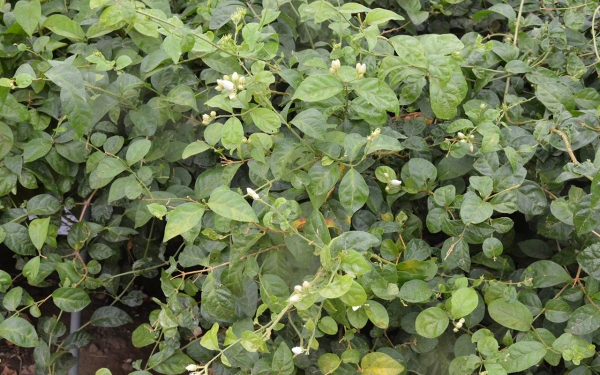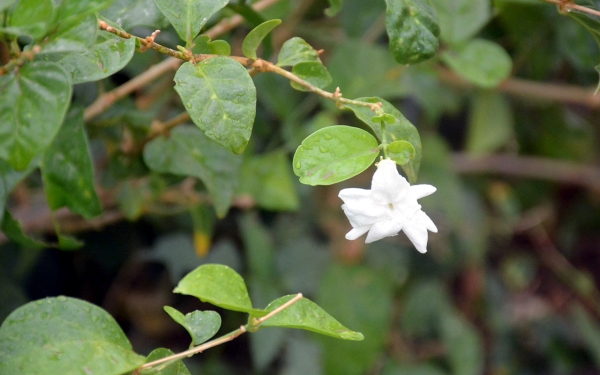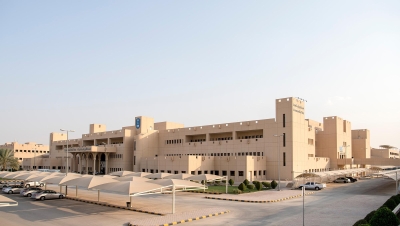


Jasmine Cultivation in the Kingdom of Saudi Arabia is a famous agricultural practice in Jazan, southwest of Saudi Arabia, where organized farms grow this aromatic plant, locally known as Arabian Jasmine. Jasmine is an integral part of Jazan's traditional heritage. With approximately 227,350 jasmine shrubs, the farms yield nearly 280 t of flowers each year.
In Jazan, planting jasmine begins in spring, when the temperature is relatively low. Farmers regularly irrigate their jasmine farms and build square-shaped structures of wood panels to allow the plants to grow and climb naturally, a process that also makes the flowers visible from all sides. Moreover, the women of Jazan care for jasmine shrubs planted indoors, which are also abundant in public gardens.
Jazan is home to 950 jasmine farms where various kinds of jasmine are produced. Azzan jasmine, for instance, boasts larger, yellow-colored flowers than its white counterpart, and grows in the region's mountain highlands. Arishi jasmine, known for its very strong aroma and its bright white color, is also cultivated. Moreover, the farms offer a unique variety of local jasmine with distinct, yellowish-colored flowers of varying sizes. Visitors can also find the Jazan jasmine, famous for its intensely fragrant aroma, which is commonly harvested in the area.
Specifications of the jasmine plant in Jazan
Jasmine is a climbing plant (Lianas) that can reach 3 m in height. Its evergreen leaves grow on tender branches and have a smooth leathery texture. In Saudi Arabia, jasmine blooms in the summer. Yet, its flowers may grow intermittently during other seasons of the year. It is characterized by its intense aromatic smell and white tubular flowers.
Jasmine is reproduced by planting seeds or is propagated by cuttings, and is best grown on trellises or in basins, under direct sunlight, or in partial shade. To grow well, it needs regular irrigation and fertile soil. The most suitable time to fertilize jasmine is in spring, and it is advised to transplant it in autumn. It can be pruned at any time throughout the year. Though jasmine cannot tolerate harsh cold weather for long, it is generally resistant to plant diseases.
Uses of jasmine in Jazan Province
Jasmine holds a place of high significance in the local community across Jazan. Women and men of the city use it as adornment on several occasions, e.g., weddings, birth celebrations, and guest receptions. They also use this plant as a neck or head accessory in their daily or social life in general, as Jasmine is an integral part of the area's traditions.
Supporting jasmine farmers in Jazan
The Association of Jasmine and Aromatic Plants was established in Jazan Province in 2021 to support farmers of Arabian jasmine and aromatic plants. It aims to enhance their products, address the challenges they face, provide seeds, seedlings, fertilizers, and equipment, establish factories to distill Arabian jasmine and extract its oil, organize agricultural and marketing festivals, and prepare farms to obtain the necessary certificates for the exportation of their products outside Saudi Arabia, in accordance with Saudi Vision 2030.
Related quizzes

